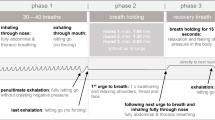Summary
Three mental arithmetic tests of graded difficulty were presented to eight young male volunteers on consecutive days. The effort compensation patterns were investigated using urinary catecholamines and salivary cortisol.
A significant increase in adrenaline excretion was found in response to all three tests. Urinary adrenaline was partially graded according to the level of difficulty of the tests. The response patterns to mental workload also included a significantly lower noradrenaline/adrenaline ratio and a higher adrenaline/dopamine ratio after the tests. No significant increase was found after the tests for noradrenaline and dopamine.
Changes in salivary cortisol concentration during the tests were graded with respect to test difficulty between the easiest and both of the more difficult tests. Salivary cortisol concentration changes are proposed as the basis for field observations involving mental workload.
It is concluded that mental workload causes distinguishable effort compensation patterns and that under certain conditions urinary adrenaline and salivary cortisol allow one to distinguish different mental workload levels.
Similar content being viewed by others
References
Euler Von US (1974) Sympatho-adrenal activity in physical exercise. Med Sci Sports 6:166–173
Dimsdale JE, Moss J (1980) Short-term catecholamine response to psychological stress. Psychosom Med 42:493–497
Fibiger W, Singer G, Miller AJ (1984a) Relationship between catecholamines in urine and physical and mental effort. Int J Psychophysiol 1:325–333
Fibiger W, Singer G, Kaufmann H (1985) Diurnal changes of cortisol and IgA in saliva and life events. J Occup Health Safety 1:21–25
Fibiger W, Singer G (1984b) Urinary dopamine in physical and mental effort. Eur J Appl Physiol 52:437–440
Frankenhaueser M (1979) Framework for psychoneuroendocrine studies. In: Howe HE, Dienstbier RA (eds) Nebraska Symposium on Motivation 1978. University of Nebraska Press, Lincoln, pp 123–161
Guechot J, Fiet J, Passa P, Villette JM, Gourmel B, Tabuteau F, Cathelineau G, Dreux C (1982) Physiological and pathological variations in saliva cortisol. Hormone Res 16:357–364
Hagberg JM, Hickson RC, McLane JA, Ehsani AA, Winder WW (1979) Disappearance of norepinephrine from the circulation following strenuous exercise. J Appl Physiol 47:1311–1314
Haggendal J, Hartley LH, Saltin B (1970) Arterial noradrenaline concentration during exercise in relation to relative work levels. Scan J Clin Lab Invest 26:337–342
Hodges JR, Jones MT, Stockman MA (1962) Effects of emotion on blood corticotrophin and cortisol concentrations in man. Nature 193:1187–1188
Jakober B, Schmulling RM, Muller PH, Eggstein M (1983) Hormonal and metabolic changes in starving obese patients during exhaustive physical exercise. J Endocrinol Invest 6:445–453
Kindermann W, Schnabel A, Schmitt WM, Biro G, Cassens J, Weber F (1982) Catecholamines, growth hormone, cortisol, insulin and sex hormones in anaerobic and aerobic exercise. Eur J Appl Physiol 49:389–399
Kuoppasalmi K, Naver H, Harkonen M, Adlercreutz H (1980) Plasma cortisol, andiostendion, testosterone and luteinizing hormones in running exercise of different intensities. Scan J Clin Lab Invest 40:403–409
LeBlanc J, Cote J, Jobin M, LaBrie A (1979) Plasma catecholamines and cardiovascular responses to cold and mental activity. J Appl Physiol 47:1207–1211
Lehmann M, Huber G, Splori M, Keul J (1982) Katecholaminausscheidung bei körperlicher und koncentrativen Belastungen. Int Arch Occup Environ Health 2:175–186
Lundberg U, Forsman L (1978) Adrenal-medullary and adrenocortical responses to understimulation and overstimulation: comparison between type-A and type-B persons. Rep Dept of Psychology, University of Stockholm, No 541
Marchbanks VC (1958) Effect of flying stress on urinary 17-hydrocorticosteroids levels. Avia Med 27:676–682
Moyer TP, Jiang N, Tyce GM, Sheps SG (1979) Analysis for urinary catecholamines by liquid chromatography with amperometric detection: methodology and clinical interpretation of results. Clin Chem 2:256–263
Riad-Fahmy D, Read GF, Walker RF (1983) Salivary steroid assays for assessing variation in endocrine activity. J Steroid Biochem 19:265–272
Rose RM (1984) Overview of endocrinology of stress. In: Brown GM (ed) Neuroendocrinology and psychiatric disorder. Raven Press, New York
Vinning RF, McGinley RA, Maksuytis JI, Ho KY (1983) Salivary cortisol a better measure of adrenal corticol function than serum cortisol. Ann Clin Biochem 19:157–158
Wadson RW, Mason JW, Hamburg DA, Handlon JH (1963) Plasma and urinary 17-OHCS responses to motion pictures. Arch G Psych 9:62–72
Wierville WW (1979) Physiological measures of aircrew mental workload. Human Fact 21:575–593
Author information
Authors and Affiliations
Rights and permissions
About this article
Cite this article
Fibiger, W., Evans, O. & Singer, G. Hormonal responses to a graded mental workload. Europ. J. Appl. Physiol. 55, 339–343 (1986). https://doi.org/10.1007/BF00422730
Accepted:
Issue Date:
DOI: https://doi.org/10.1007/BF00422730




